(Ver debajo para español)
Grief is the sense of loss we can feel at different times in our lives over various matters, but more intensively with the loss of a loved one.
Faith can help us cope with grief, however, it never eliminates it because grief is a product of love. John 11 illustrates this in the account of Lazarus’ death. Jesus, as true Man, wept over his death. That momentary separation caused Him pain, even though He knew He had the power to bring Lazarus back to life.
As human beings, we experience emotions deeply. Thus, when someone passes away, a funeral or a memorial service can help with the grieving process and give us closure. However, in the current circumstances, those services cannot happen in the customary ways.
As a way to adapt, some could opt to have a restricted funeral, while others might prefer to wait until regular services resume. The uncertainty of when this might happen can cause various spiritual concerns.
In a funeral service, the body is returned to the earth and the soul is commended into the care of Christ – these words give us comfort as we are assured that the soul is in the hands of God. However, it is important to understand that the almighty God has already acted in the moment of death where the soul and spirit are taken into the realm in which they need to be, according to His will. The soul is not in limbo until we get around to having a funeral service. God acts because He cares for and loves all souls. He understands our grief and wants to comfort us.
ESPAÑOL
El duelo es la sensación de pérdida que podemos sentir en distintas ocasiones de nuestras vidas debido a diversas situaciones, pero de manera más intensa debido a la pérdida de un ser amado.
La fe puede ayudarnos a lidiar con el duelo, sin embargo, nunca lo elimina porque este es un producto del amor. Juan 11 ilustra esto en el relato de la muerte de Lázaro. Jesús, como verdadero hombre, lloró por su muerte. Esa separación momentánea le causó dolor, aunque sabía que tenía el poder de devolverle la vida a Lázaro.
Como seres humanos, experimentamos profundamente las emociones. Por lo tanto, cuando alguien fallece, un servicio de funeral o conmemorativo puede ayudar con el proceso de duelo y darnos cierre. Sin embargo, en las circunstancias actuales, dichos servicios no pueden realizarse de la manera habitual.
Como una forma de adaptarse, algunos podrían optar por tener un funeral restringido, mientras que otros podrían preferir esperar hasta que se reanuden los servicios regulares. La incertidumbre de cuándo podría ocurrir esto puede causar diversas inquietudes espirituales.
En un servicio de funeral, el cuerpo es regresado a la tierra y el alma es encomendada al cuidado de Cristo; estas palabras nos dan consuelo ya que se nos da la seguridad de que el alma está en las manos de Dios. Sin embargo, es importante entender que el Dios todopoderoso ya actuó en el momento de la muerte, donde el alma y el espíritu son llevados al ámbito en el que necesitan estar, conforme a Su voluntad. El alma no está en el limbo hasta que podamos realizar un servicio de funeral. Dios actúa porque Él cuida y ama a todas las almas. Él entiende nuestro dolor y quiere consolarnos.

Episode 82
Grief during the pandemic
June 4, 2020
Episode 96
(Ver debajo para español) The emblem has slightly evolved over time. However it has appeared, the emblem has always represented the New Apostolic Church. The international church says: The Church emblem is the visual identification mark of the New Apostolic Church and thus part of its identity. The symbolism of the cross, sun, and water is a reference to the Christian church. Any further significance is not intended. The emblem or the cross can be put inside the sanctuary. Historically, it had always been a cross behind the altar, but, at one point, in the USA, we started putting the emblem in the sanctuary. Recently, especially with newer buildings, the USA has started to put the emblem only on the outside of the building (to designate that it is a New Apostolic Church) and the cross in the sanctuary behind the altar. This is because the cross is the symbol of Christ; He is who we want to focus on as we are in the divine service. The cross is a unifying symbol for all Christians. If other Christians are visiting our churches, then they know that they are also with other believers. ESPAÑOL El emblema ha evolucionado ligeramente con el tiempo. Independientemente de su apariencia, el emblema siempre ha representado a la Iglesia Nueva Apostólica. La iglesia internacional dice: «El emblema de la Iglesia es la señal visual por la que se reconoce a la Iglesia Nueva Apostólica y, por lo tanto, forma parte de su identidad. El simbolismo de la cruz, el sol y el agua es una referencia a la Iglesia cristiana, no se le asigna un significado más amplio». El emblema o la cruz se pueden poner dentro del santuario. Históricamente, siempre había sido una cruz detrás del altar, pero, en cierto punto, en los EE. UU., comenzamos a colocar el emblema en el santuario. Recientemente, especialmente en los edificios más nuevos, en los EE. UU. se ha comenzado a colocar el emblema solo en el exterior del edificio (para indicar que se trata de una Iglesia Nueva Apostólica) y la cruz en el santuario detrás del altar. Esto se debe a que la cruz es el símbolo de Cristo; Él es en quien queremos centrarnos cuando estamos en el Servicio Divino. La cruz es un símbolo unificador para todos los cristianos. Si otros cristianos están visitando nuestras iglesias, entonces saben que también están con otros creyentes.
Episode 95
(Ver debajo para español) We have to inquire of the Lord – what does God want me to do? We have to make an effort to try and figure out what God wants us to do. We should take time to meditate and pray over it, so the Holy Spirit can give us thoughts and feelings. We can also understand that our conscience is connected to the Holy Spirit in that He amplifies this inner voice to inspire us with what God wants us to do. God created man and woman in His image. We are able to reason, use logic, etc. – we are gifted to make some decisions ourselves. Any decision that has to do with our salvation is what the Holy Spirit wants to speak to us about. That could include decisions about where we live, who our partner in life is, etc. He helps us to see the right path. When we inquire of God what He wants, and we come to a moment where we say, “This could be the path for me,” – this is how we know the path God wants us to be on. When something is just our own idea, we might see doors closing or opportunities not coming. But paths open when we start to align with God. And the more we read Scripture, the more we can understand how Jesus was and how He thinks, the more we absorb in the divine service, then the more we will come to the conclusion that the Lord wants us to come to. This gets easier the older we get and the more experience we have. Reflecting on God’s presence in our lives and how He has helped us also gives us joy and reassurance as we continue to make decisions that align with God’s will. And when we finally do discover what God wants of us, then we must trust Him in that He’s doing everything to bring us closer to Him. ESPAÑOL Tenemos que preguntarle al Señor: ¿qué quieres que haga? Tenemos que hacer un esfuerzo para tratar de averiguar lo que Dios quiere que hagamos. Debemos tomar tiempo para meditar y orar sobre ello, para que el Espíritu Santo pueda proporcionarnos pensamientos y sentimientos. También podemos entender que nuestra conciencia está conectada con el Espíritu Santo en el sentido de que Él amplifica esta voz interior para inspirarnos con lo que Dios quiere que hagamos. Dios creó al hombre y a la mujer a Su imagen. Somos capaces de razonar, usar la lógica, etc. Estamos dotados para tomar algunas decisiones nosotros mismos. Cualquier decisión que tenga que ver con nuestra salvación es de lo que el Espíritu Santo nos quiere hablar. Eso podría incluir decisiones sobre dónde vivir, quién es nuestro compañero en la vida, etc. Él nos ayuda a ver el camino correcto. Cuando le preguntamos a Dios qué quiere Él y llegamos a un momento en el que decimos: «Este podría ser el camino para mí», así es como sabemos el camino en el que Dios quiere que estemos. Cuando algo es solo nuestra propia idea, es posible que veamos que las puertas se cierran o que las oportunidades no llegan. Pero los caminos se abren cuando empezamos a alinearnos con Dios. Y cuanto más leemos las Escrituras, más podemos entender cómo era Jesús y cómo piensa, más absorbemos del servicio divino, más llegaremos a la conclusión a la que el Señor quiere que lleguemos. Esto se vuelve más fácil a medida que envejecemos y tenemos más experiencia. Reflexionar sobre la presencia de Dios en nuestras vidas y cómo nos ha ayudado también nos da alegría y tranquilidad a medida que continuamos tomando decisiones que se alinean con la voluntad de Dios. Y cuando finalmente descubrimos lo que Dios quiere de nosotros, entonces debemos confiar en Él, en que Él está haciendo todo lo posible para acercarnos a Él.
Episode 94
(Ver debajo para español) In the Christian calendar, we have different seasons of Lent, Advent, Eastertide, etc. Each of these seasons gives attention to what’s coming. In Advent, we prepare for the coming of Christ. In Eastertide, we prepare for Pentecost and the work of the Holy Spirit. In God’s creation, we also have seasons. In many parts of the world, people experience four different seasons. Patterns and cycles are built into God’s creation for a specific reason, and the Christian calendar reflects that. In the USA district of the Church, we also align some of our programs with seasons, such as the Sunday School lessons or the season of Confirmation, which happens during Eastertide. Another season that we have adapted is the season of ordination, which happens from June to August and January to February. Having these designated times of ordination allows a few months for the person to prepare to become a minister. During this time, they take courses and have discussions that are all essential to understanding ordination and ministry. That is the purpose of seasons – we are able to better understand the thing we’re preparing for. Having these rhythms and seasons creates reliability and accountability. ESPAÑOL En el calendario cristiano, tenemos diferentes temporadas de Cuaresma, Adviento, Tiempo de Pascua, etc. Cada una de estas temporadas dirige la atención a lo que viene. En Adviento, nos preparamos para la venida de Cristo. En el Tiempo de Pascua, nos preparamos para Pentecostés y la obra del Espíritu Santo. En la creación de Dios, también tenemos temporadas. En muchas partes del mundo, las personas experimentan cuatro estaciones diferentes. Los patrones y ciclos están integrados en la creación de Dios por una razón específica, y el calendario cristiano refleja eso. En el distrito de la Iglesia de EE. UU., también alineamos algunos de nuestros programas con temporadas, como las lecciones de la Escuela Dominical o la temporada de Confirmación, que ocurre durante el Tiempo de Pascua. Otra temporada que hemos adaptado es la temporada de ordenación, que ocurre de junio a agosto y de enero a febrero. Tener estos tiempos designados de ordenación permite unos meses para que la persona se prepare para convertirse en ministro. Durante este tiempo, toman cursos y tienen conversaciones que son esenciales para comprender la ordenación y el ministerio. Ese es el propósito de las temporadas: podemos comprender mejor aquello para lo que nos estamos preparando. Tener estos ritmos y temporadas crea confiabilidad y responsabilidad.




